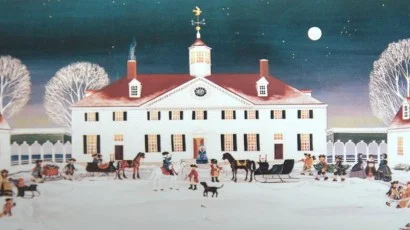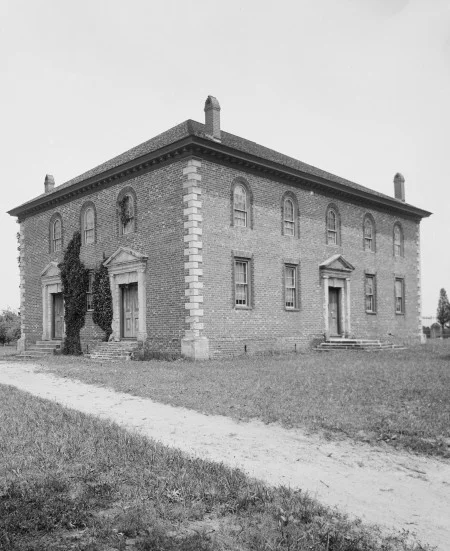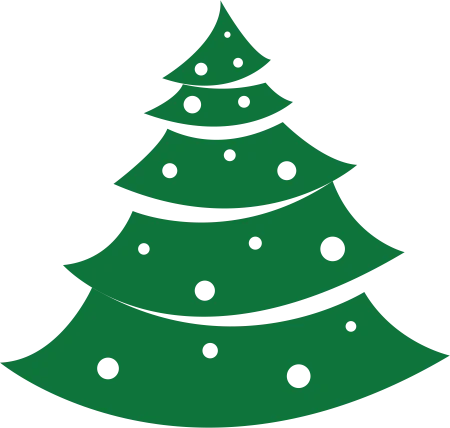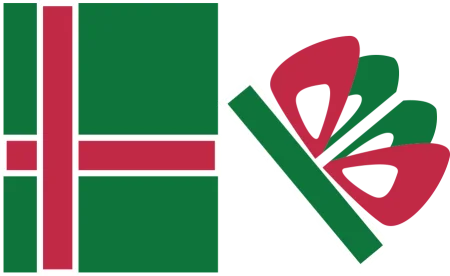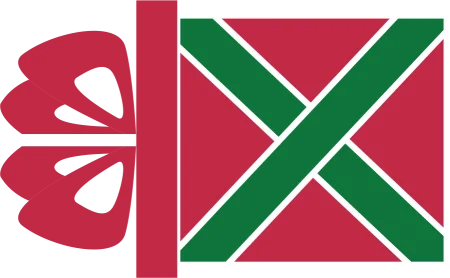Though Christmas was celebrated in the late 18th century during Washington's time, modern visitors to Mount Vernon might be surprised to find so few contemporary holiday decorations in the Mansion.

Throughout Washington’s life, his references to Christmas are few, making it extremely difficult to reconstruct details of his holiday celebrations. That is why we keep Christmas at Mount Vernon quite simple even today.
One of the things Mount Vernon staff quickly learned was that many modern Americans are uneasy with the differences they find between how Christmas was observed 200 years ago and present-day customs. It required a shift in orientation on the part of our staff—and our visitors—for them to appreciate the good things about an 18th-century Virginia Christmas.
A Simpler Holiday
In Virginia 200 years ago, Christmas was primarily a religious holiday, described by one colonist in 1774 as “the day set apart to remember the Nativity of our Lord and Saviour Jesus Christ.”1
It was also, however, a festive occasion marked by visits between friends and relatives, parties, and public assemblies.2 Something of the excitement generated by this holiday can be found in the diary of a young man, newly arrived on a Virginia plantation, who noted one week before Christmas in 1773, that:
Nothing is now to be heard of in conversation, but the Balls, the Fox-hunts, and fine entertainments, and the good fellowship, which are to be exhibited at the approaching Christmas.3
A great deal has been written about the Washingtons and Christmas, much of it greatly embellished and characterized by an overabundance of wishful thinking and romanticism.4 As evidenced by George Washington’s correspondence, his diaries, and cash accounts, Christmas at Mount Vernon followed the typical Virginia pattern for the period, which was based in turn on English customs, stressing sociability and entertaining, and was far more simple than modern-day Americans may have imagined or feel comfortable with.5
Christmas at Mount Vernon was far more simple than modern-day Americans may have imagined or feel comfortable with.
Decorations
Many of the things 21st-century Americans expect to find at Christmas are of Germanic origin and were unknown to the residents of Mount Vernon.
No Christmas Tree?
While Christmas trees might have been known among the German settlers on the Virginia frontier in the 18th century, the earliest such tree, which can be documented, appears to have been set up at Fort Dearborn, on the site of the present-day city of Chicago, Illinois, in 1804.
In Virginia, the honor of having the first documented Christmas tree goes to Williamsburg, where, in 1842, a German faculty member at the College of William and Mary named Charles Frederic Ernest Minnegerrode put one up at the home of another professor.6
Did George Washington Have a Christmas Tree?
How did the Washingtons decorate Mount Vernon during the holidays? Did they put up a Christmas tree? Jeremy Ray, Mount Vernon's director of interpretation, explains 18th-century Christmas decorations.
No Stockings at Mount Vernon? No Santa?
Stockings filled with “good & usefull [sic] things” brought by St. Nicholas, “the Dutchman’s and best Saint in the Universe” were part of the Dutch holiday celebration in late 18th century New York, but were not part of the tradition in Anglican and Quaker sections of the country, until the first half of the 19th century.7
It’s believed that a pamphlet printed in 1810 portrays the earliest-known American image of Santa—11 years after Washington’s death.
No Piles of Gifts?
Gift-giving was much less a part of the holidays during the 18th century than it is today.
To modern eyes, the “Sundries” purchased by Washington in Philadelphia in December of 1783, which included a locket, three small pocket books, three thimbles, three sashes, a dress cap, a hat, a handkerchief, children’s books, a whirligig, a fiddle, a gun, and some quadrille boxes, were undoubtedly intended as Christmas gifts for his family.8
Washington, however, was returning home from the Revolution, after an absence of eight years, during which he had been to Mount Vernon only twice—on his way to and from the decisive battle at Yorktown in 1781. It may well be that he was simply bringing presents for his wife, former daughter-in-law, and four step-grandchildren—three girls, ranging in age from 7 to 4 and a little boy of 2—who would barely remember him, if they recognized him at all. The fact that he would be giving these things at Christmas was perhaps secondary to the homecoming and getting to know these, to him, new members of the family.
Christmas for the Enslaved Community
The enslaved and white servants at Mount Vernon sometimes received gifts of money or alcohol at Christmas.
No Blowout Festivities?
A Swedish visitor to the Middle Colonies prior to the Revolution found the Christmas traditions of the English colonists lacking in comparison to those he had known back home and noted that colonists of other backgrounds were beginning to alter their own holiday practices to bring them more into line with those of the English:
The members of the English church hardly made any bigger preparations for Christmas than for any Sunday, and when it came on a week-day it was not celebrated any more than a Swedish Apostle’s Day. The Quakers paid still less attention to it, for since they observe no other holiday except Sunday they work on Christmas Day just as on any other day, unless it comes on Christmas Day and celebrated it as we do in Old Sweden, but now no candles are used and its observance has been much curtailed.9
Over 20 years later, a young Englishman who traveled to Virginia in 1774 and remained for the first few years of the Revolution, made the observations that Christmas was, “But little regarded here” and that it was “very little observed in this country, except it is amongst the Dutch.”10
Merry, Nonetheless
While there are indeed differences between Christmas then and now, there are also some important similarities. Like today, it was most of all a time for gathering of family and friends, for good food, and gracious hospitality.
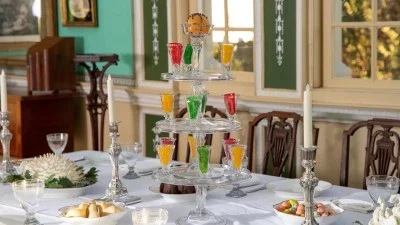
How the Mansion Might Have Looked at Christmas
Every year, Mount Vernon’s team brings some wintertime changes to the Mansion to mark the holiday season. See how the rooms, and the bountiful dining room table, might’ve looked during a Christmas with the Washingtons.
Footnotes
[1] Landon Carter, 12/25/1774, The Diary of Colonel Landon Carter of Sabine Hall, 1752-1778, 2 volumes, edited by Jack P. Greene (Charlottesville, Virginia: Published for The Virginia Historical Society by The University Press of Virginia, 1965), 2:903
[2] Jane Carson, Colonial Virginians at Play (Williamsburg, Virginia: The Colonial Williamsburg Foundation, 1989), 4-5.
[3] Philip Vickers Fithian, 1/18/1773, in John Rogers Williams, editor, Philip Vickers Fithian, Journal and Letters, 1767-1774 (Princeton, New Jersey: The Princeton University Library, 1900), 64.
[4] See, for example, Olive Bailey, Christmas with the Washingtons: Being a Special Account of Traditional Rites observed in Virginia and Historic Yuletides of One First Family, the Washingtons of Mount Vernon (Richmond, Virginia: The Dietz Press, Inc., 1948).
[5] For English Christmases at this period, see Sara Paston-Williams, The Art of Dining: A History of Cooking & Eating (London: National Trust Enterprises Limited, 1993), 240.
[6] Harnett T. Kane, The Southern Christmas Book: The Full Story From Earliest Times to Present: People, Customs, Conviviality, Carols, Cooking (New York: David McKay Company, Inc., 1958), 23-31; “Christmases Past and Present,” The Colonial Williamsburg Interpreter, 6. For the location of Fort Dearborn, see “Dearborn, Henry,” in Thomas H. Johnson, The Oxford Companion to American History (New York: Oxford University Press, 1966), 235.
[7] John DePeyster to Charles Willson Peale, 12/15/1797, in Lillian B. Miller, editor, The Selected Papers of Charles Willson Peale and His Family, Volume 2, Part 1 (New Haven, Connecticut, and London: Published for the National Portrait Gallery, Smithsonian Institution, by Yale University Press, 1988), 208 & 209n.
[8] George Washington, “By Sundries bot. in Phila,” 12/13/1783, in George Washington Cash Memoranda, Oct. 1774-Dec. 1784 (bound photostat, A-55, Mount Vernon Ladies’ Association), 50.
[9] Adolph B. Benson, translator, Peter Kalm’s Travels in North America: The English Version of 1770, Volume 1 (New York: Wilson-Erickson Inc., 1937), 233.
[10] Nicholas Cresswell, The Journal of Nicholas Cresswell, 1774-1777 (New York: The Dial Press, 1924), 51 & 178.
Webpage compiled from research by Mary V. Thompson.
